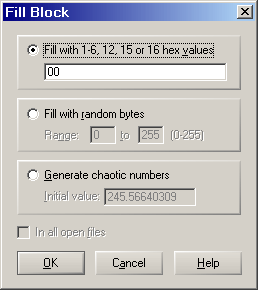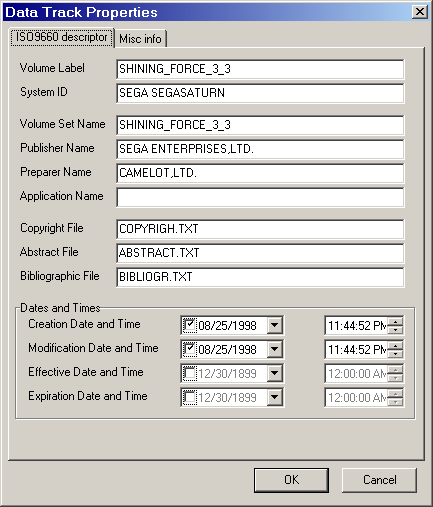Hey,
I was wondering if someone knew how to use a program like ISO Buster or something similar to strip/delete the File System structure out of an BIN Image?
Thanks!
I'm not sure if this is what you're looking for, but you can just extract the first x number of sectors out of the BIN image or from the actual CD to get the file system structure. First you need to know where the file system ends and the actual first file data begins. To find out, you can use IsoBuster to view the BIN image or CD, then sort from smallest LBA to highest LBA by clicking on the LBA column.
Currently, I have the Shining Force III Scenario 3 CD in my CD-ROM drive. After sorting by LBA order in IsoBuster, I see that the first file starts at LBA 47. Knowing that, I used CDRWin to extract sector 0 to sector 46 from the CD and saved it as MODE1/2048 data to a file which I called SF3SCN3.ISO. SF3SCN3.ISO is exactly (47 sectors) x (2048 bytes/sector) = 96,256 bytes = 94 KB in size. You may open it like any ISO with IsoBuster or CDmage and you'll be able to view the file system structure.
If you're working with a BIN image of Shining Force III Scenario 3, you can use a hex editor to extract the first 47 sectors of data out and save to a new file. However, you need to know the sector size of your BIN image, whether it's 2048, 2336, or 2352. If you have a BIN+CUE, the cue sheet should tell you. If you just have the BIN image without a cue sheet, then take the file size (in bytes) of the BIN image and divide by 2048, 2336, and 2352, respectively. The divisor used that results in a whole number is the sector size. For example, I have a BIN image that is 509,713,680 bytes in size. I see that dividing by 2352 results in a whole number, therefore the sector size is 2352. Knowing the sector size, I can calculate how much data I should extract from the BIN image. In this case, that would be (47 sectors) x (2352 bytes/sector) = 110,544 bytes. Next, I open the BIN image with a hex editor and extract starting from position 0 to position 110543 (hex equivalent would be 0 to 1AFCF). Note that the ending position is 1 smaller than the calculated size because we're starting position 0, not 1 (
think in terms of an array in C++). Save it to a file and call it SF3SCN3.BIN. Again, you should be able to open it like any image file with IsoBuster or CDmage to be able to view the file system structure. Additionally, if you want, you can use CDmage or any of the BIN2ISO or RAW2ISO tools to convert it to a MODE1/2048 .ISO file.
iso buster and cdmage both have extraction funtions somewhere, i know because i spent the better part of 2 hours messing around with it trying to get a copy of wipeout to work on my psx before realizing that it was the saturn version
LOL! You could've just looked at the header of the ISO to find out if it was the Saturn version using a hex editor or something.



